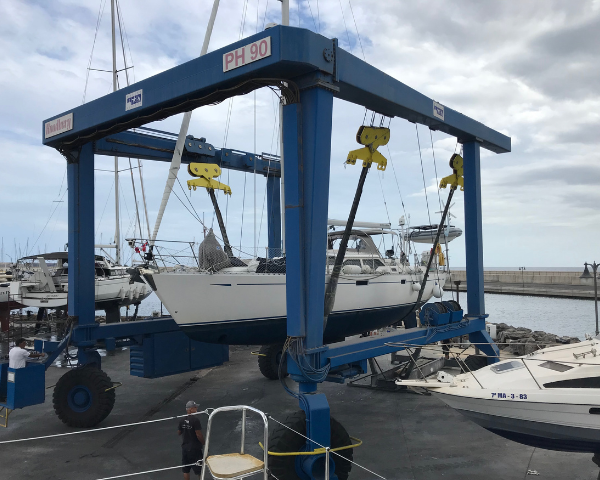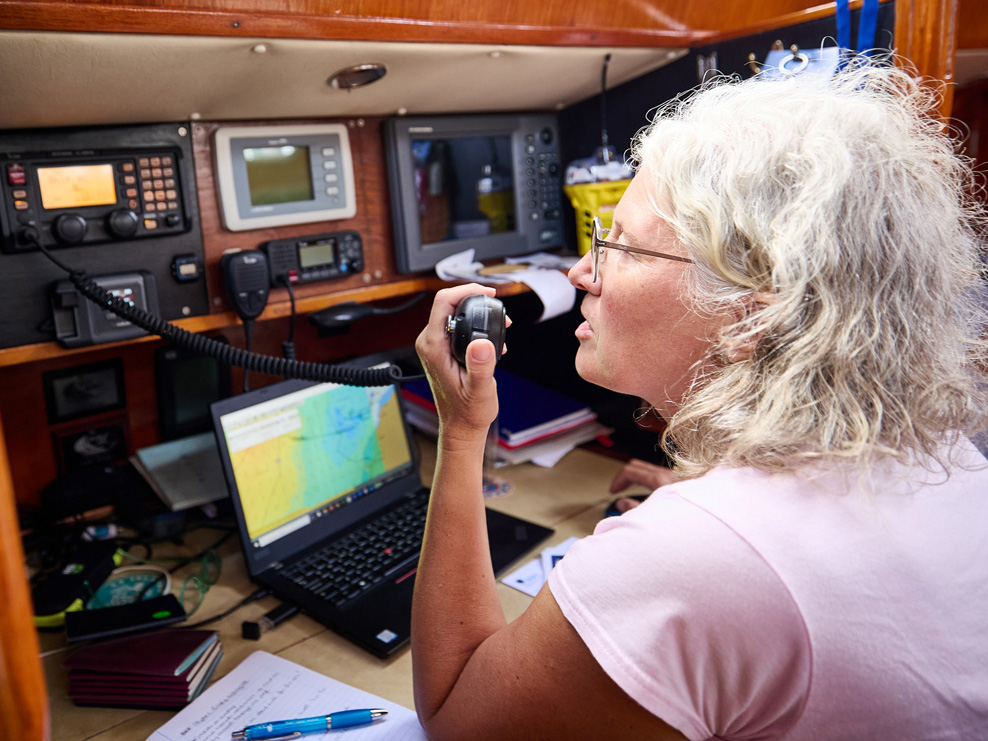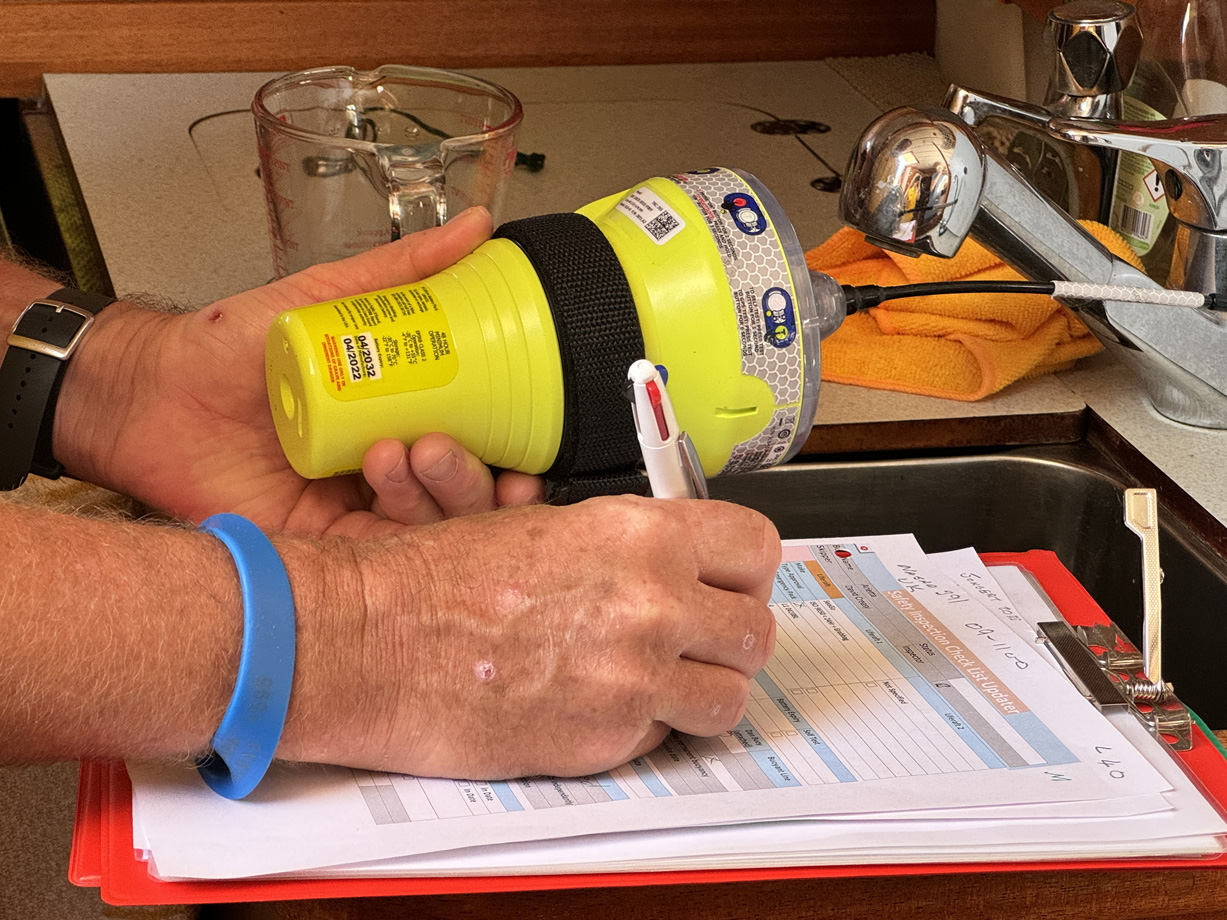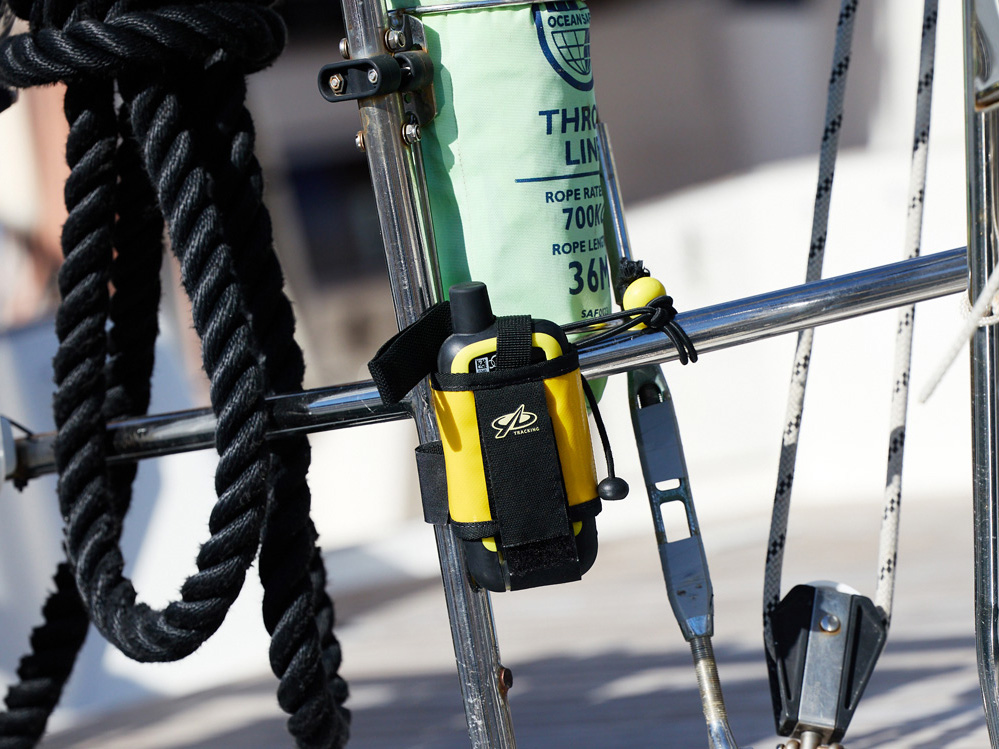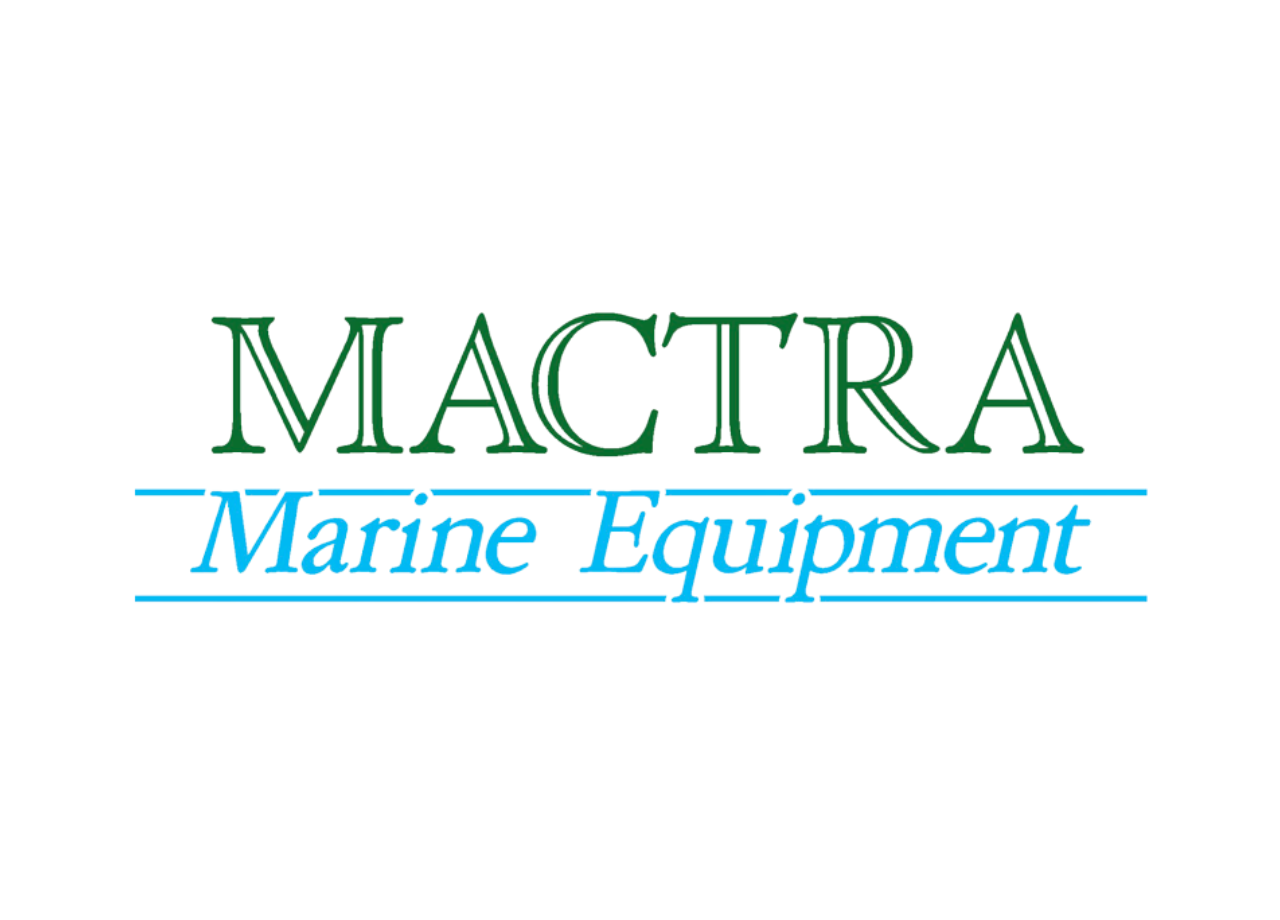Voice Communications
All boats must have a 25W DSC VHF radio with a deck speaker and emergency antenna, plus a waterproof 5W handheld VHF. This short-range communication is useful for contacting other vessels within about 10NM, and with shoreside comms from rally control and marine authorities.
Beyond the requirement for VHF, there are other options you might choose. The traditional long range voice communications method for cruisers was SSB (HF radio), and although this feels like ‘yesterday’s technology’ there are still active radio nets connecting cruisers worldwide. Unless you are planning a circumnavigation, fitting SSB is expensive, but boats with a working system can enjoy zero-cost chats, sing-alongs, cookery competitions and other wholesome fun, as well as having another means of distress calling.
The key benefit of one-to-many comms such as VHF and SSB is that you broadcast to anyone within range, so a distress call can be picked-up by multiple vessels.
Satphone systems, FaceTime, WhatsApp and VoIP calling are one-to-one, exactly like your mobile phone. You need to know the number to call. In an emergency this is good for calling the coastguard, but less useful for alerting all vessels within range to help.
